Take the Poll | Join our Discussion
sponsored by

Emergency Alerts When a Person Falls
Falling is one of the most common types of accidents humans can have, and for the elderly falling can be debilitating or even -fatal. Additionally, for professionals engaged in risky trades, such as construction, roofing, or maintenance, unintentional falls are also a major health concern. Some falls can have severe consequences, and victims have the best chances of recovery if they are treated immediately. Because a person may be alone, or rendered unconscious after a fall, a monitoring system that instantaneously alerts emergency assistance can be a life saver. One method that can be used to detect falls is incorporating an acceleration sensor into a wearable device, and analyzing the motion recorded by that sensor. This article describes a wearable system that detects falls via a 3-axis MEMS acceleration sensor.
What Is an Acceleration Sensor?
Acceleration sensors or accelerometers are devices that sense static or dynamic forces of acceleration, such as gravity, vibration, or movement. They can measure acceleration on one, two, or three axes. Most acceleration sensors are capacitive; they detect changes in capacitance when capacitive plates attached to tiny springs move in relation to fixed plates. Other acceleration sensors utilize the piezoelectric effect, where voltages are generated by the stressing of tiny internal crystals due to the movement of the device.
The sensor we’re using in this example is the WSEN-ITDS from Würth Elektronik (WE), a 3-axis MEMS (microelectromechanical system) capacitive acceleration sensor that is well-suited for integration into a wearable device for human fall detection. It consumes very little power, prolonging its battery life, and it has a tiny 2mm x 2mm x 0.7mm footprint. The WSEN-ITDS features a measurement range of ±2g, ±4g, ±8g, and ±16g in all three axes. Communications take place via a standard I2C interface.
The WSEN-ITDS features built-in free fall, wake up, tap, motion/stationary, and activity/inactivity detection, a combination of which can be used to develop a suitable algorithm for fall detection. Additionally, the wake up and activity/inactivity detection capabilities eliminate the need for continuous reading of accelerometer data.
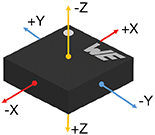
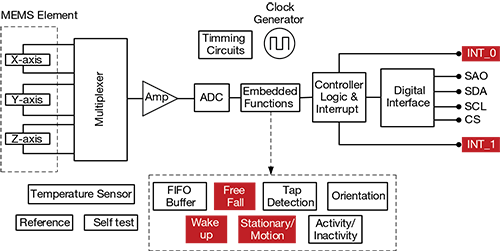
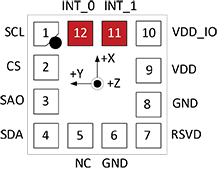
Figure 1: WSEN-ITDS 3-Axis Acceleration Sensor, Functional Block Diagram, and Pinouts
Source: Würth Elektronik
Figure 1 illustrates a WSEN-ITDS 3-axis acceleration sensor with a functional block diagram. The pinout highlights INT_0 and INT_1, two programmable interrupt pins that can be configured to transmit interrupt signals from the sensor.
What Happens When You Fall?
A human fall detection system must be able to correctly identify three situations:
- When a person has fallen
- When a person has fallen, but can still move around
- When a person has fallen and cannot move
These situations can be identified by developing an algorithm that combines three of the WSEN-ITDS’s built-in detection capabilities: free fall, wake up, and motion/stationary detection. When an event such as a free fall is detected, an interrupt signal is sent to the INT_0 or INT_1 pin. These signals can be analyzed, and if a fall is detected, an alarm is triggered in the monitoring system.
Naturally, the algorithm used to detect a fall will be different depending on the application. The duration of the free fall will be longer for a window washer falling from several meters than for an elderly person falling from a standing position. The time interval between free fall and a stationary/wake up event can also vary, depending on the application.
Free Fall Detection
To an acceleration sensor, a free fall is detected when the acceleration values on all three axes go towards 0g over a short duration. This is explained as follows:
- At rest, the acceleration on the X- and Y-axis should be 0g, because the device is not moving in any direction. The acceleration on the Z-axis, however, should read 1g. This is due to gravity. At rest, the perception of an acceleration sensor is that it is accelerating opposite the force of gravity, at 1g or approximately 9.8 m/s2.
- When a fall happens, the acceleration on the Z-axis will approach 0g, because now there is no acceleration countering the acceleration of gravity, and thus there has been a fall. The feeling of weightlessness that you might feel when descending in an airplane is when acceleration on the Z-axis approaches 0g.

Figure 2: Free Fall Detection
Two specifications are necessary to determine if the movement is a free fall: the duration, or how long the fall lasts, and the threshold, which defines a range for the amount of acceleration indicating a fall (for example, -0.4g to 0.4g). The free fall interrupt triggers when the combined acceleration values from all three axes during a free-fall are lower than the threshold value in a time period greater than or equal to the specified duration.
Wake-Up Detection
A wake-up signal is generated when the acceleration value exceeds a certain threshold from any of the axes after a sleep/inactive/stationary event. Figure 3 illustrates the triggering of a wake-up signal.

Figure 3: Wake-Up Detection
Stationary Detection
Figure 4 demonstrates the method in which the accelerometer recognizes a stationary state, starting after a specified sleep duration and ending when a wake-up occurs.

Figure 4: Stationary Detection
Interpreting the Data: How Do You Know It’s a Fall?
Figure 5 illustrates a typical human fall, as seen by an acceleration sensor.
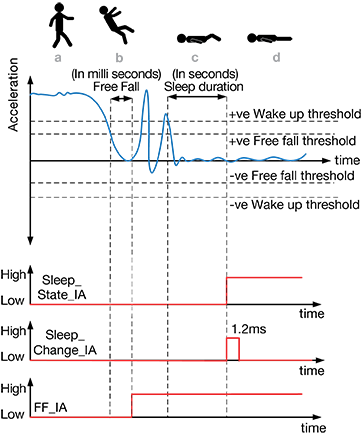
Figure 5: Human Fall Interpretation
- Before the fall, the vector sum of all acceleration values will be near 1g from all three axes
- At the start of a fall, the weightless feeling occurs. If criteria are met for free fall duration and threshold, an FF_IA interrupt signal is generated. Acceleration during free fall will approach 0g; however, immediately after the fall, the impact of hitting the floor will result in a noticeable spike of acceleration.
- After falling, a person might attempt to recover immediately. In the event of a severe impact, however, the person may be immobilized. This period of non-movement can be detected with stationary detection.
- If the stationary state is detected for a certain period of time, the person is considered unable to move, possibly unconscious, and the SLEEP_CHANGE_IA and SLEEP_STATE_IA interrupt signals are generated, which can then trigger an alarm. If the person stands, a wake-up interrupt signal is generated instead, and no alarm is triggered.
Notifying Emergency Contacts
A wearable device with an integrated fall detection system should include a notification function. The block diagram in Figure 6 illustrates such a device, a wearable with its hardware enclosing a 3-axis accelerometer and a GPS/GSM module. Communication between the acceleration sensor and MCU takes place through an I2C communication bus. Because wearable devices are battery operated, one of the most important requirements for their design is low power consumption, and all functionality, including wireless communications, should continue to work even in low power mode. When a fall is detected through acceleration analysis, the system wirelessly transmits the user's geographic position to one or more emergency contacts.
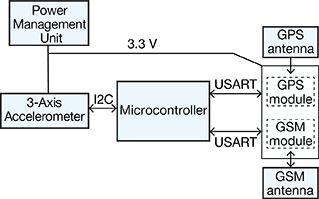
Figure 6: Fall Detection and Notifying System with GPS/GSM Module
Source: National Institute of Health
In the case of minor falls or false alarms, the system should also include a button to manually silence the alarm. Pressing the button reverts the device to its fall detection state, and dispatches another notification to emergency contacts informing them that the fall was not severe.
Würth FeatherWing Development Board
To help with design and development, Würth Elektronik provides a range of open-source Feather form factor compatible FeatherWing development boards. FeatherWing boards add a range of wireless connectivity modules, sensors, and power modules to the Feather ecosystem.
The Würth Elektronik FeatherWing product lineup includes the Sensor FeatherWing , Thyone-I Wireless FeatherWing , Calypso Wi-Fi FeatherWing , and the MagI³C Power FeatherWing . All products can be connected to a FeatherWing microcontroller board.
The Sensor FeatherWing (Figure 7) includes on-board Temperature, Absolute Pressure, Humidity, and 3-Axis Acceleration sensors, connected over the shared I2C bus in the Adafruit Feather form-factor. It is compatible with the QWIIC-connect from Sparkfun, and easy to expand with other WE FeatherWings and hundreds of existing boards with the Feather and QWIIC form factor. Arduino (C/C++) drivers and code examples are available on Github.
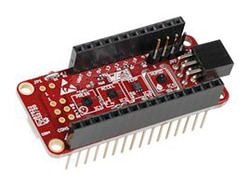
The Sensor FeatherWing can be used to quickly develop prototypes for IoT applications and applications that collect environmental data. Additionally, FeatherWings can be stacked. The data read from the Sensor FeatherWing can be forwarded to a cloud platform via the Calypso Wi-Fi FeatherWing.
Summing Up: A Wearable Human Fall Detector
The introduction of tiny components with low power consumption has led to the development of wearable electronic devices. A wearable is an ideal form factor for the monitoring of health and fitness vitals. One important application in health and safety is human fall detection, which can be implemented in a wearable device with the inclusion of an acceleration sensor, such as Würth’s WSEN-ITDS. The WSEN-ITDS includes several built in detection features that can be combined to create a reliable algorithm for detecting human falls.

-

dougw
-
Cancel
-
Vote Up
0
Vote Down
-
-
Sign in to reply
-
More
-
Cancel
-

nwieland
in reply to dougw
-
Cancel
-
Vote Up
0
Vote Down
-
-
Sign in to reply
-
More
-
Cancel
Comment-

nwieland
in reply to dougw
-
Cancel
-
Vote Up
0
Vote Down
-
-
Sign in to reply
-
More
-
Cancel
Children